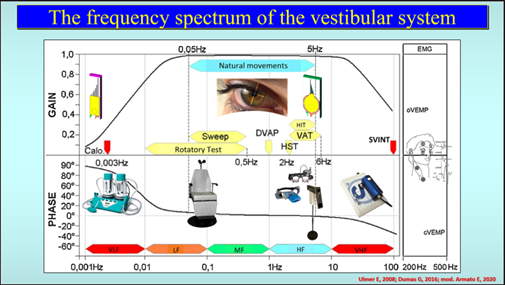What is the frequency spectrum of the vestibular system?
The vestibular system is a complex sensory system closely interconnected with the visual and central nervous systems. It responds to specific stimuli such as angular and linear head movements, with receptors divided into two types: type I (phasic) and type II (tonic) cells, each with distinct clinical expressions and evaluation methods.
Information from the vestibular system travels through the vestibular nerve to various brain regions, including the vestibular nuclei, oculomotor nuclei, spinal cord, and cerebellum. The system is responsive to different frequencies of head movement, similar to the cochlea's response to sound frequencies.
There are various frequency ranges of stimulation of the labyrinth, ranging from very low to very high frequencies. Tonic receptors are active at very low to medium frequencies, while phasic receptors come into play at high and very high frequencies.
Different tests are used to assess different frequency ranges.
- Bithermal caloric tests are suitable for the evaluation of very low frequencies and express the function of tonic receptors;
- Kinetic tests are suitable for the evaluation of low and medium frequencies and express the function of tonic receptors;
- HST and HIT are suitable for the evaluation of high frequencies and express the function of phasic receptors;
- The Vibratory test is suitable for the evaluation of very high frequencies and expresses the function of the phasic receptors.
Beyond the very high frequencies, we enter the domain of vestibular evoked potentials, namely oVEMPs and cVEMPs.
The choice of which tests to perform depends on the suspected diagnosis and the information needed to confirm it. Contradictions in test results may occur in certain conditions. The dissociation between bithermal heat tests and HIT is known in subjects affected by endolymphatic hydrops, with the former being altered in the initial stages of the disease and the latter remaining normal. This highlights the need for a selective approach to vestibular testing based on diagnostic suspicion.

*The content has undergone a slight revision by the Academia editorial team.



 Aller en haut
Aller en haut

 International - English
International - English Italia - Italiano
Italia - Italiano France - Français
France - Français USA - English
USA - English